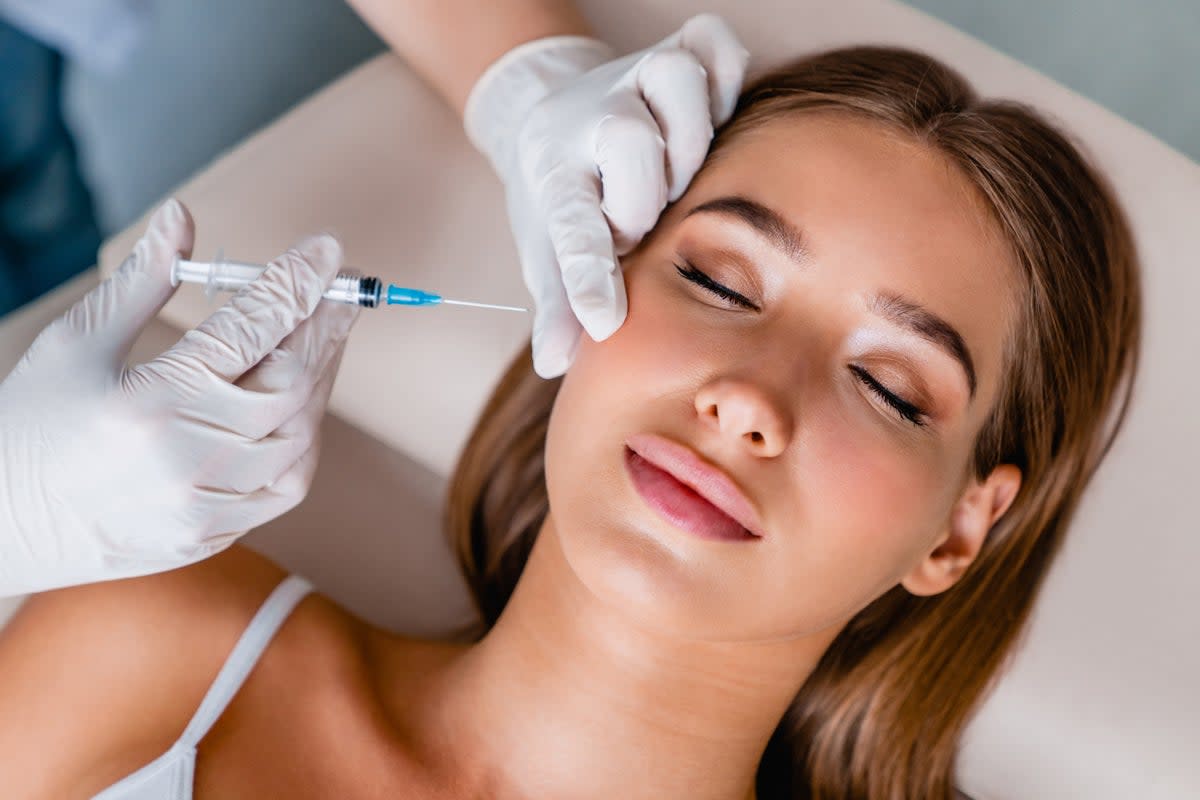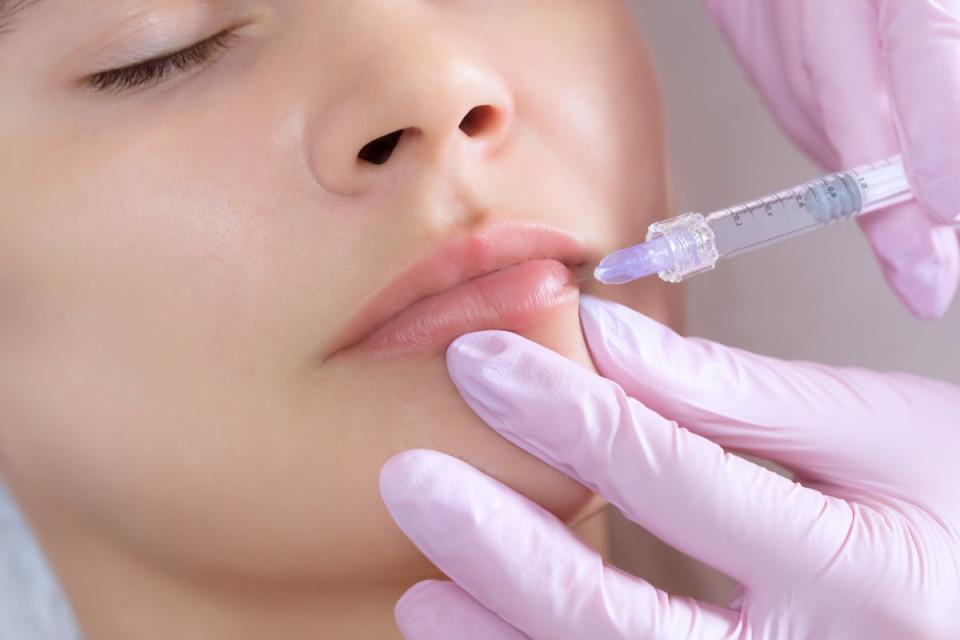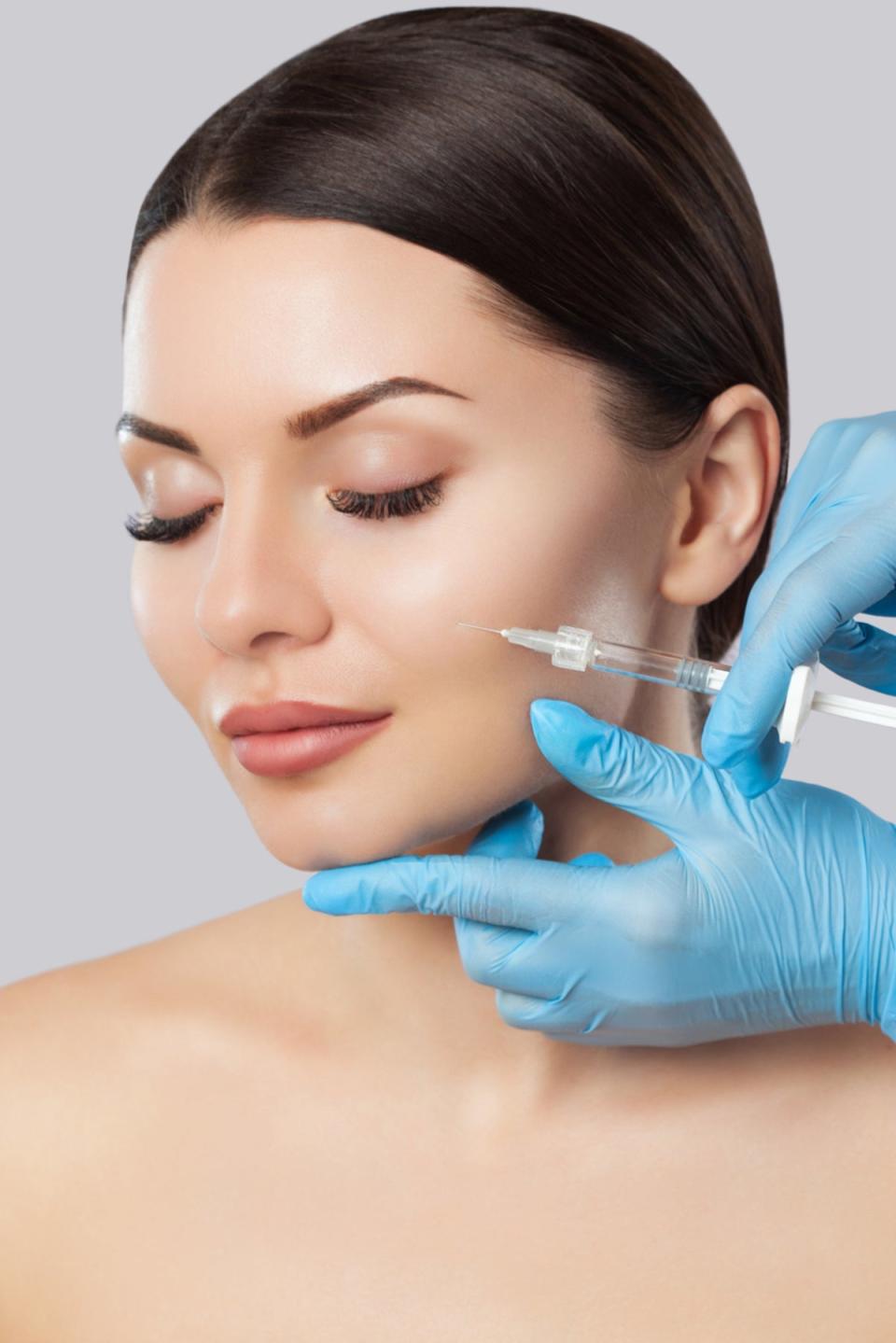Rise of the trout pout teens: How thousands of under-18s fell for Botox and filler

Milly* was getting her eyebrows waxed when her beautician made a comment about her lips. “They asked if I’d like to get any filler in them,” she recalls. “They were doing a special deal that day, so it would only cost £50, which seemed like a bargain. I was tempted. But I couldn’t really afford it as I had to buy some new textbooks.” Milly is studying at university; she is 20 years old.
To some, Milly’s experience might sound surprising. Why would someone so young want to do anything to alter their already cherubic face? Surely it’s way too soon to even think about anti-aging treatments? And how many practitioners would even agree to treating someone that age, let alone actively promote it? Well, far more than you’d think.
In 2021, cosmetic Botox and lip fillers were banned in England for those under the age of 18. The ruling was long overdue, following reports that around 41,000 Botox-style procedures were thought to have been carried out on under-18s in England the previous year alone. More than 29,300 dermal filler procedures may have been performed on the same age group between 2016 and 2020. These figures immediately rang alarm bells about the paucity of regulation within the non-surgical cosmetic industry.
Despite the ruling, however, children are still receiving botox and filler across the UK, with reports claiming that some under-18s are even travelling from England to Wales and Scotland, where no such rulings exist, in order to get around the law.
“We’ve had reports of children from Bristol and Hereford travelling across the border to Wales, while some are going from Newcastle to Scotland,” says Ashton Collins, director of Save Face, an organisation that has a register of qualified clinics and practitioners in the UK. Generally, Save Face receives concerned calls from parents whose children have had procedures, mostly lip filler, without their knowledge; something has gone awry and they don’t know where to turn.
All this sounds particularly odd when you consider what Botox and filler actually do to a person’s face. Botox injections are designed to relax the muscles in your face to smooth out wrinkles, which is not exactly a primary concern for anyone in their early twenties, least of all under-18s. It’s not cheap, either, with treatments costing around £100 to £350, depending on the clinic and the area being treated. It typically lasts a few months.
As for face and lip fillers (dermal fillers), these are substances injected into your face to fill lines and wrinkles. They can also add volume to certain areas, like your lips or cheeks. According to the NHS, most dermal fillers contain a natural substance called hyaluronic acid and last between six and 18 months.
I’ve had some children as young as 14 coming in and requesting Botox. It’s sadly a reflection of the huge pressure young people feel to conform to the beauty ideals they encounter in the media and on social platforms
Dr Leah Totton
Given that most of these treatments are designed with anti-ageing results in mind, why are they so popular among teenagers? “You go on Instagram and see loads of ‘make-up-free’ influencers who’ve clearly had work done but they’re promoting a so-called ‘natural’ look that is completely unattainable,” explains Milly. “But it makes you feel pressured to look a certain way in order to be beautiful. It’s hard not to get sucked in by it all.”
Another student, Cal*, 19, who hasn’t had any treatments herself but has close friends who have, explains: “It’s about wanting to fit in and feel confident”. As for what her peers are getting, it’s primarily lip filler. “For people with small lips it comes from their own self-consciousness, which they get from social media and celebrity culture,” she says.
How has this happened? “The desire to conform to online beauty standards and gain approval on platforms like Instagram, TikTok, and Snapchat has driven a concerning trend among teenagers to pursue cosmetic ‘tweakments’ to achieve a look that is often completely unrealistic and unattainable,” explains cosmetic doctor, Dr Leah Totton, who was turning under-18s away from her namesake clinics in London and Essex even before the ban came into place. “I’ve had some children as young as 14 coming in and requesting Botox,” she says. “It’s sadly a reflection of the huge pressure young people feel to conform to the beauty ideals they encounter in the media and on social platforms.”
Evidently, not all practitioners are behaving quite so responsibly. Currently, there is no legislative framework to mandate that all practitioners are required to meet both training and infection control standards in order to carry out procedures. This means that you don’t need to have any particular qualification or degree of training in order to administer dermal fillers. Hence issues are arising in particular for young people, who Collins says are finding cheap treatments on Instagram performed by people who aren’t properly qualified.
“Social media is a hot bed for these practitioners and that’s where young people are finding them,” says Collins. “They get seduced by before and after photos and cheap deals, not realising that these people are cutting significant corners in order to offer their services at such low prices.”

In some cases, these shortcuts are having devastating effects. “Injectables, such as Botox and fillers, are medical procedures that carry inherent risks, especially if not administered correctly,” says Dr Totton. “The inexperienced hands of untrained practitioners can lead to complications like infections, asymmetry, or even permanent damage.”
One major side effect that Collins has repeatedly seen is vascular occlusion, which is a blockage in your blood vessels. “We’ve seen cases where the person administering the treatment has told the patient that the bruising they’re seeing is normal and will go away,” says Collins. “But it winds up being vascular occlusion and then when the patient tries to reach out to the practitioner, they end up getting blocked by them on all forms of digital communication, which is really distressing.”
If not treated soon enough, vascular occlusion may lead to more severe symptoms that require part of the lip being removed. Other risks of dermal fillers, as listed on the NHS website, include infection, scarring, tissue death and permanent blindness.
“Mostly what we see are really unsightly outcomes from having had too much filler,” explains Collins. “For teenagers, their faces are still very small, so filler can make the child look odd and give them a trout pout look.” One of Milly’s friends had “dodgy lip filler” after seeking treatment online that went drastically wrong. “She had to have the filler removed and her lips are all scarred and wonky now,” she says.
What’s particularly concerning, says Collins, is how few practitioners are checking people’s ages before treating them. “I don’t even think in a lot of cases they ask their age,” she adds, noting how Save Face is still hearing about cases of under-18s being treated in the UK even after the law change. “In some cases we’ve seen, the practitioners have known they’re under 18 and carried out the injectables anyway. It shouldn’t take a law to prevent people from injecting children, should it?”
It should not. But evidently, even when there is a law in place, it’s not enough. So, why is this happening? In 2023, the world looks far more inclusive than it once did, particularly online, where body positivity and self-love movements have encouraged people to embrace and celebrate themselves. At least, that’s how it might seem from the outside. But take a closer look and you’ll find a treasure trove of filters encouraging users to alter the way their face looks. It’s these filter effects that experts say are encouraging young people to seek non-surgical treatments.

“The use of digital enhancement on social media is so commonplace nowadays that people use filters and apps to completely reshape their face and body and think that it’s normal,” says Dr Glyn Estebanez of Prima Aesthetics. “You’re now able to quickly create a new version of yourself which is comparable to looking in the mirror every day. It’s altering people’s perception of normal beauty ideals worldwide.”
Indeed, beauty standards have never been higher. But what is perhaps even more concerning is how all this is impacting the perception of Botox and fillers among young people. “They’re completely trivialised,” says Collins. “They think they’re no-risk treatments, like getting your nails done or your hair highlighted, and that anyone can perform them regardless of their professional background.”
As for what can be done on a legislative level, a Welsh government spokesperson said that Botox is “a prescription-only medicine and its use is regulated by the healthcare professional bodies”. They added: “It should only be prescribed to under-18s where there is a clear clinical indication for its use. Use solely for cosmetic purposes would, in general, be considered inappropriate and prescribers need to justify any such use against the standards set by their professional regulators. We will consider whether procedures that inject products into the skin, like Botox, can be added to our forthcoming licensing scheme.”
A spokesperson for the Scottish government also told me that they are “not aware” of anyone travelling from England to Scotland for Botox treatment. “Botox is available only on prescription by a registered health professional who has completed a full assessment of the patient in Scotland,” they said in a statement. “The UK-wide Medicines and Healthcare Products Regulatory Agency (MHRA) is responsible for compliance with the regulatory requirements that govern the manufacture, distribution, retail sale/supply and advertisement of medicinal products, including Botox.” They continued: “Independent healthcare clinics in Scotland that provide practitioner services are regulated by Healthcare Improvement Scotland. When considering the provision of non-surgical cosmetic procedures, healthcare professionals must take into account the physical and psychological wellbeing of the patient or client, including their age where that is a factor.”
Meanwhile, Collins is calling for a standardised process across the country to help local councils deal with complaints from parents whose children have had Botox and dermal fillers. “The issue we’re finding right now is that it’s a bit of a postcode lottery with regards to how well these issues are dealt with,” she explains. “Some local authorities are really proactive whereas others pass the buck and don’t take it seriously. Every person responsible for enforcing this law needs to have the same approach.”
But societal changes are integral, too, if we’re to change the thing that’s driving under-18s and twentysomethings to seek non-surgical cosmetic treatments in the first place.
“Promoting mental well-being, self-confidence, and individuality should take precedence over conforming to fleeting social media trends,” says Dr Totten. “By fostering a culture of self-acceptance and responsible aesthetic practices, we can better protect the well-being of our younger generation.”
*Name has been changed


